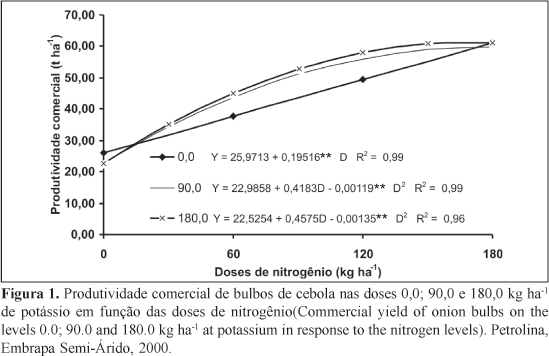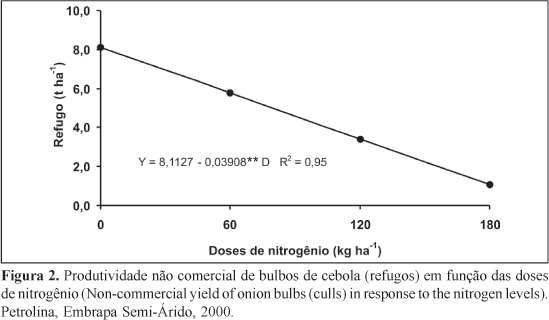This study was carried out from March to September 2000, in Petrolina, Pe rnambuco State, Brazil, to evaluate the influence of nitrogen and potassium levels on yield characteristics and post-harvest quality of onion bulbs (Allium cepa L.). The cultivar Franciscana IPA-10 was used. The experimental design was a randomized complete block in a 4 x 3 factorial scheme, involving four levels of nitrogen (0; 60; 120 and 180 kg ha-1) and three levels of potassium (0; 90 and 180 kg ha-1) with three replications. The commercial yield showed a linear effect in the absence of potassium fertilization, while the levels of 90 and 180 kg ha-1 of potassium provided maximum yield with the levels of 175.8 and 169.4 kg ha-1 of nitrogen. Increasing the doses of nitrogen resulted in a reduction of the non-commercial yield (culls). In the absence of potassium fertilization, a linear effect was obtained as a result of the levels of nitrogen for fresh mass of the bulb. For the levels of 90 to 180 kg ha-1 of potassium, the highest yield of fresh mass of the bulb was obtained with the level of 153.3 kg ha-1 of nitrogen. The levels of nitrogen influenced the classification of commercial bulbs of onion and the largest percentage of bulbs of the class 3 (85,8%) corresponded the dose of 153,6 kg ha-1 of nitrogen. No significant mass loss occurred after 20 days and only after 40 and 60 days after cure did any significant effects become evident and there was no interaction between the levels of nitrogen and potassium.
Allium cepa; fertilization; yield; postharvest conservation




